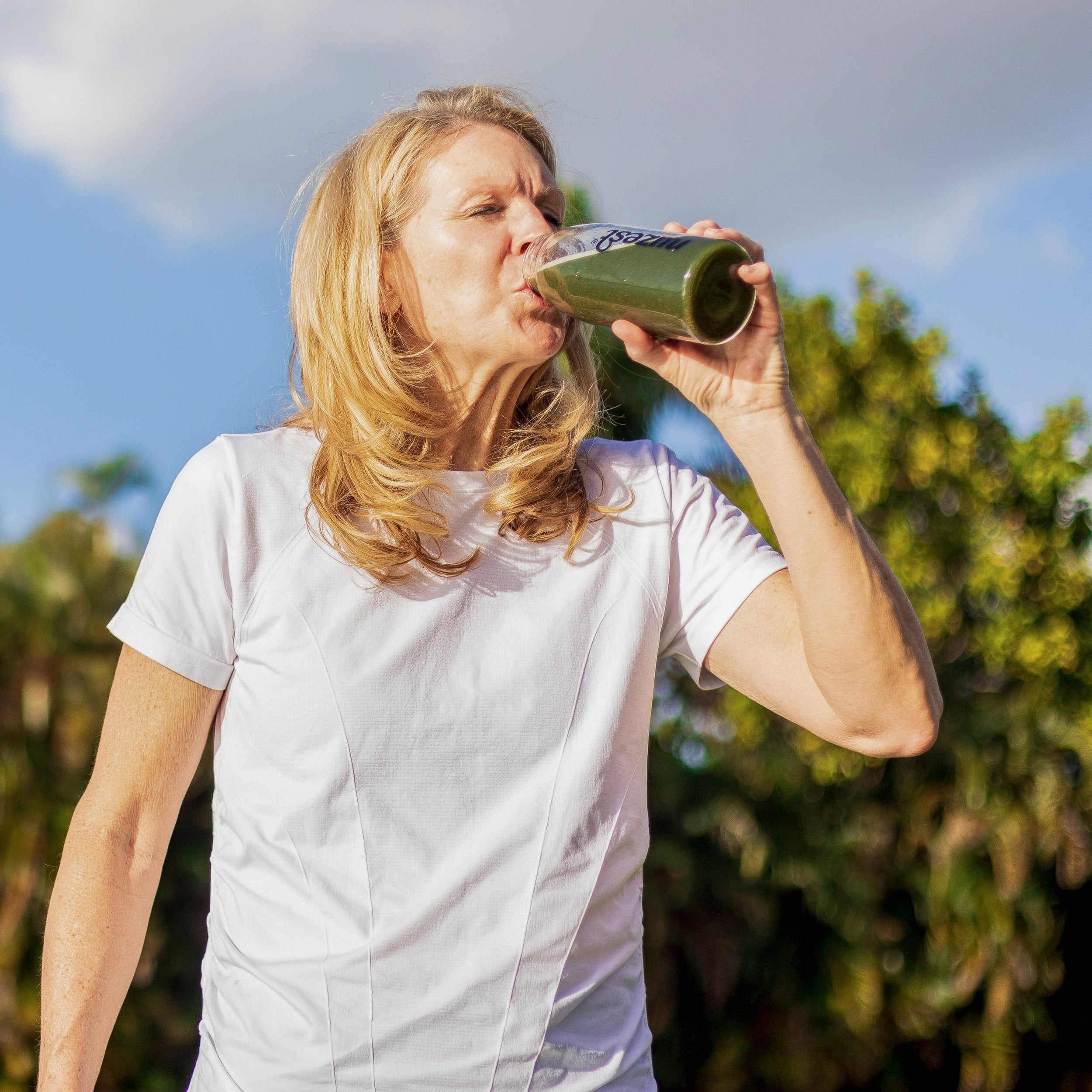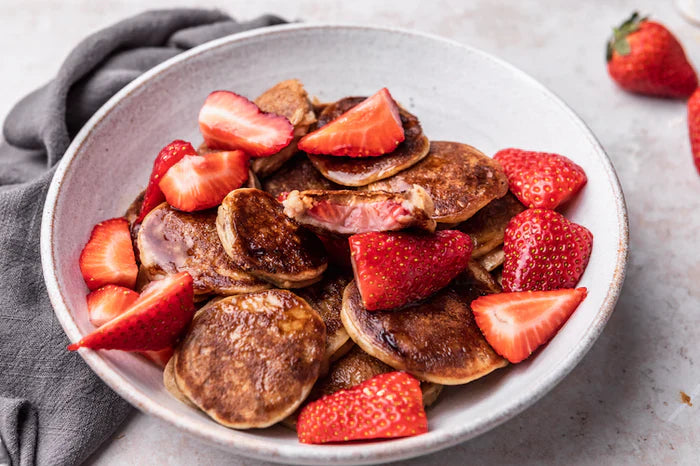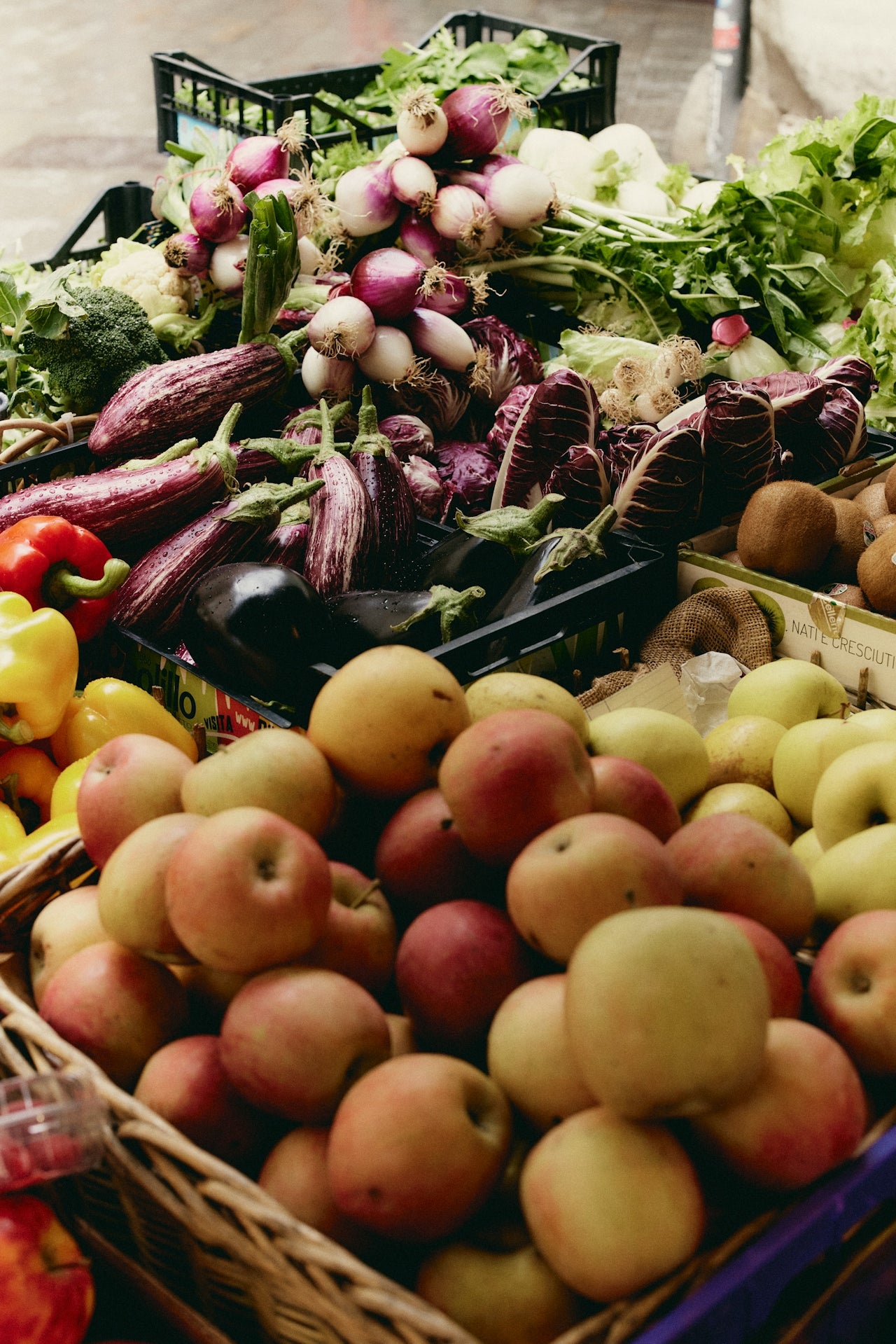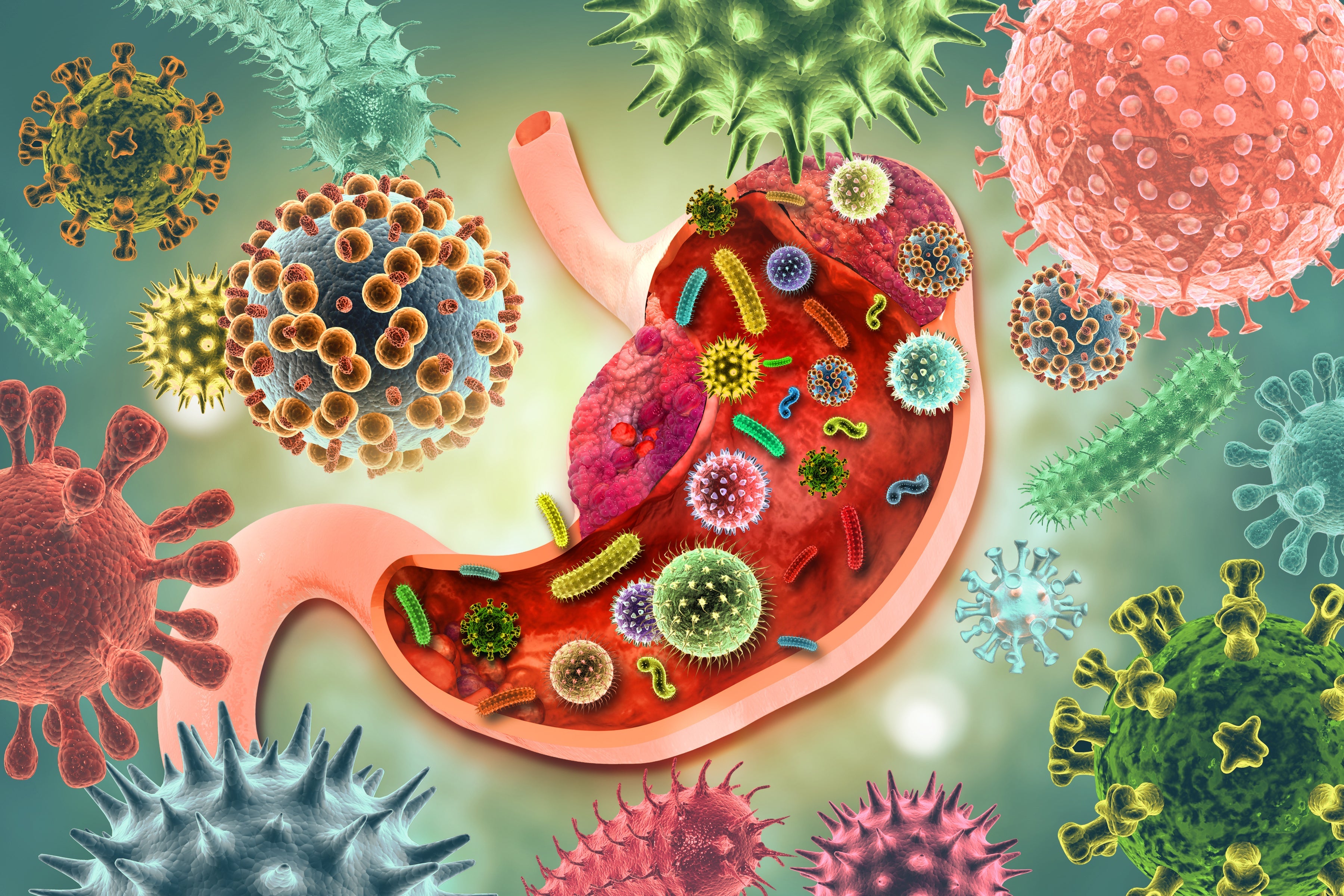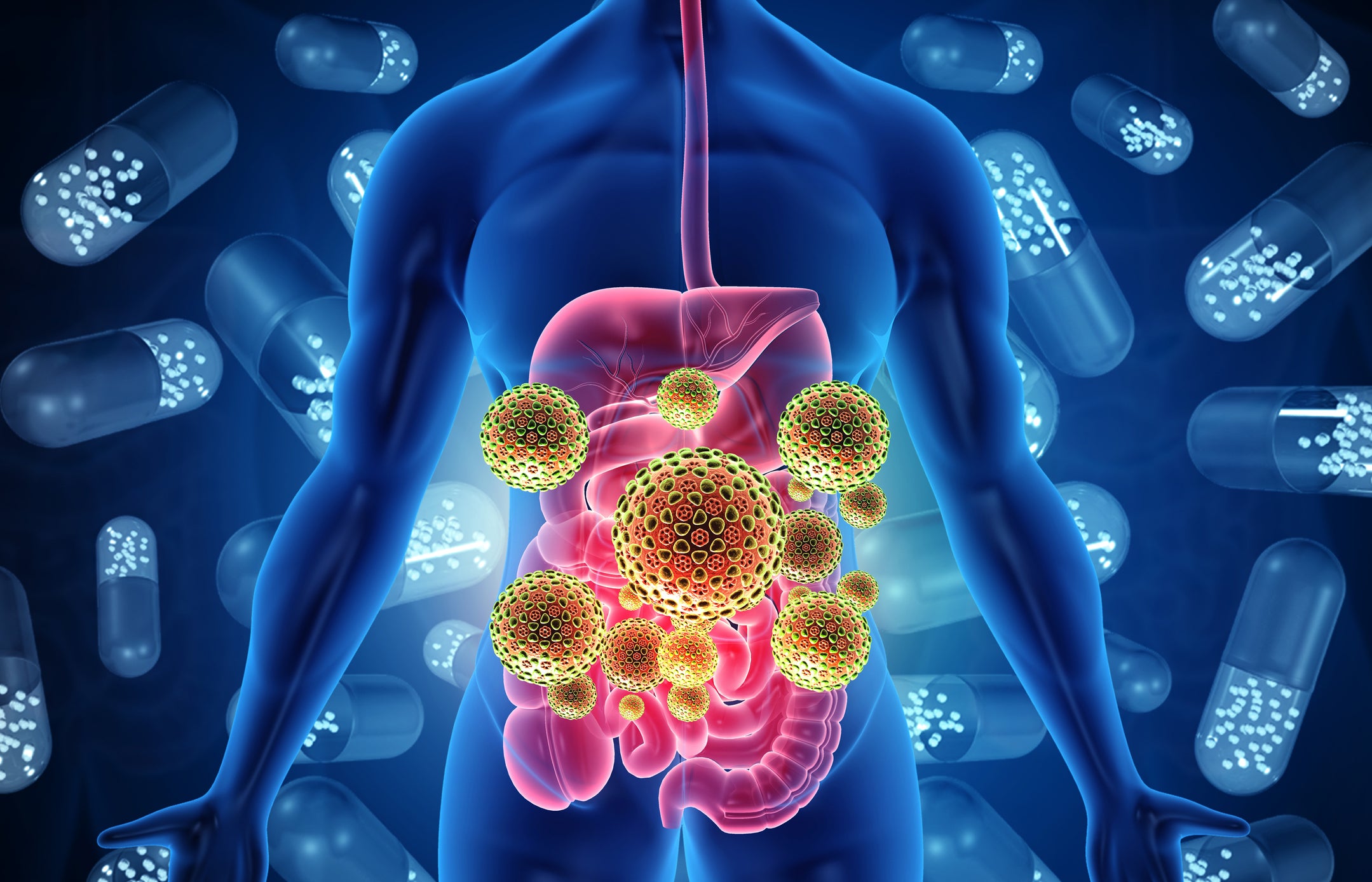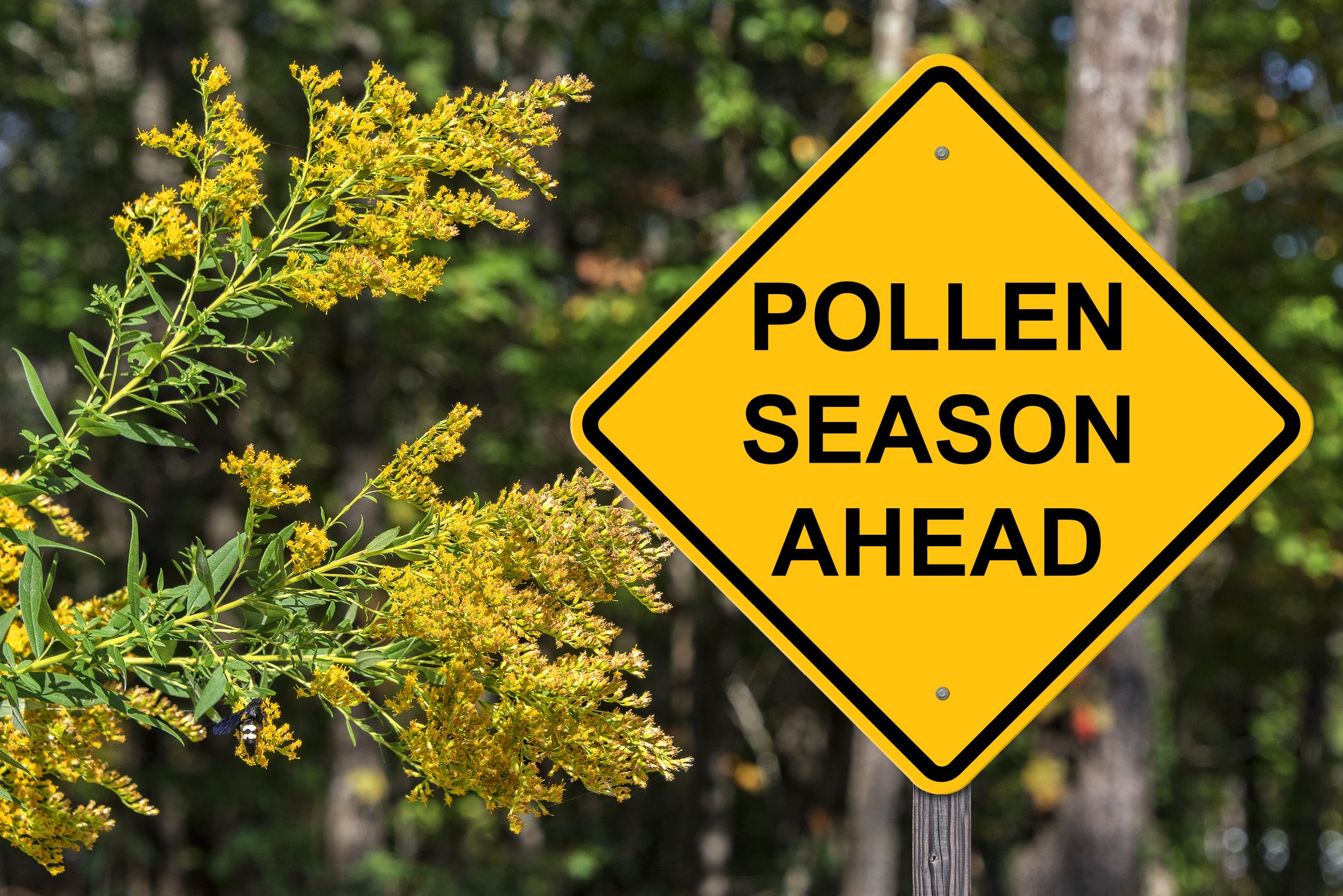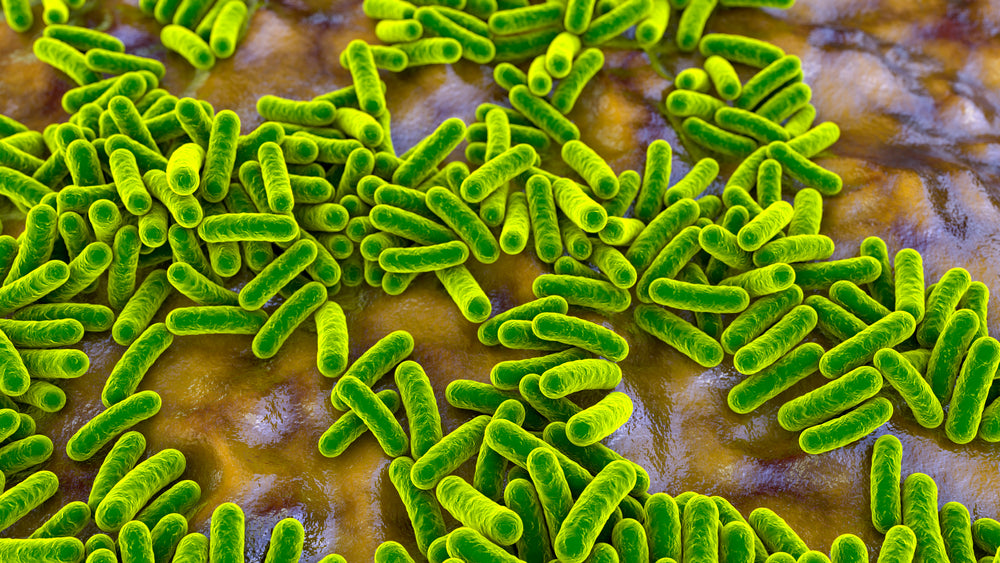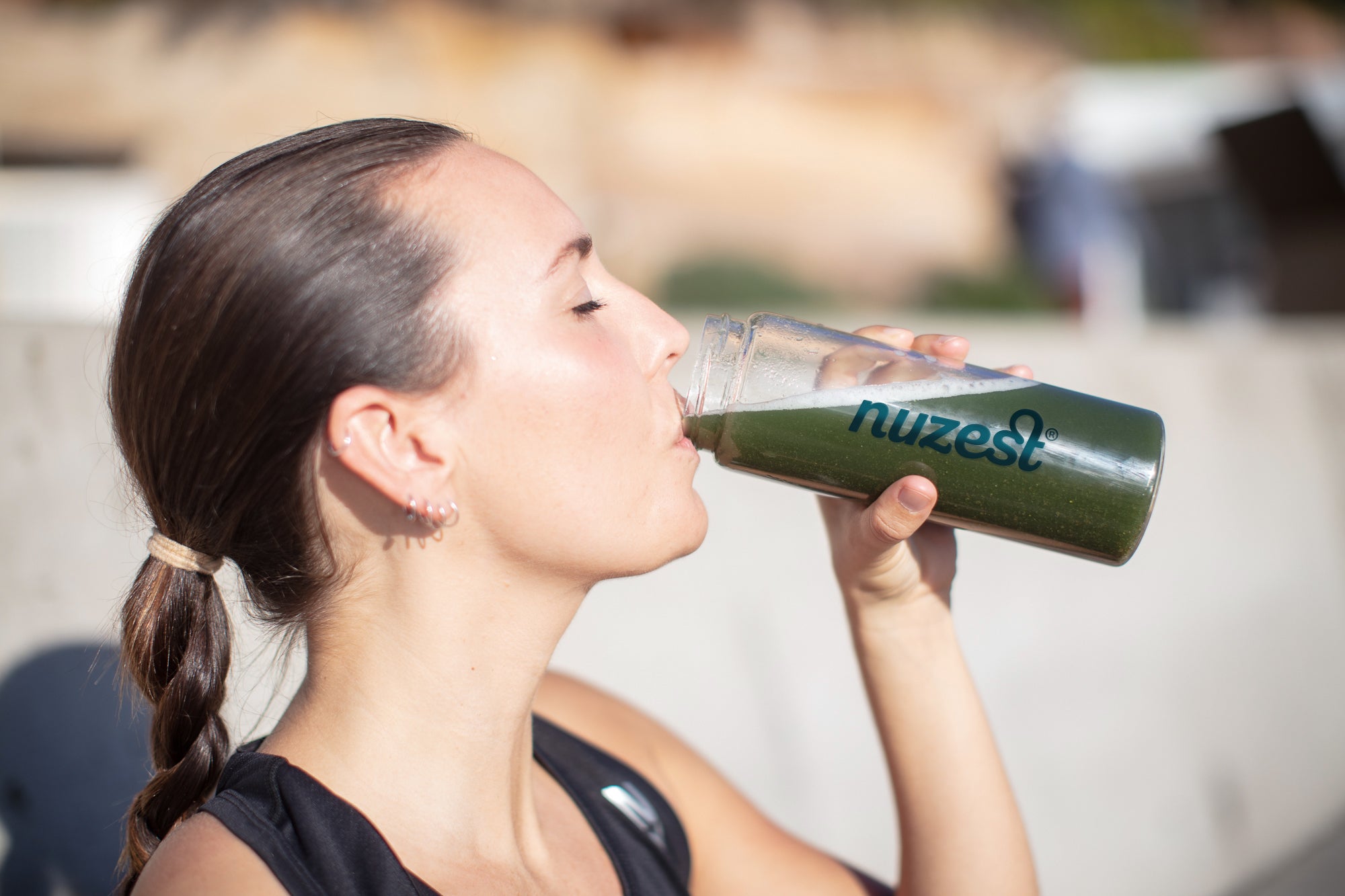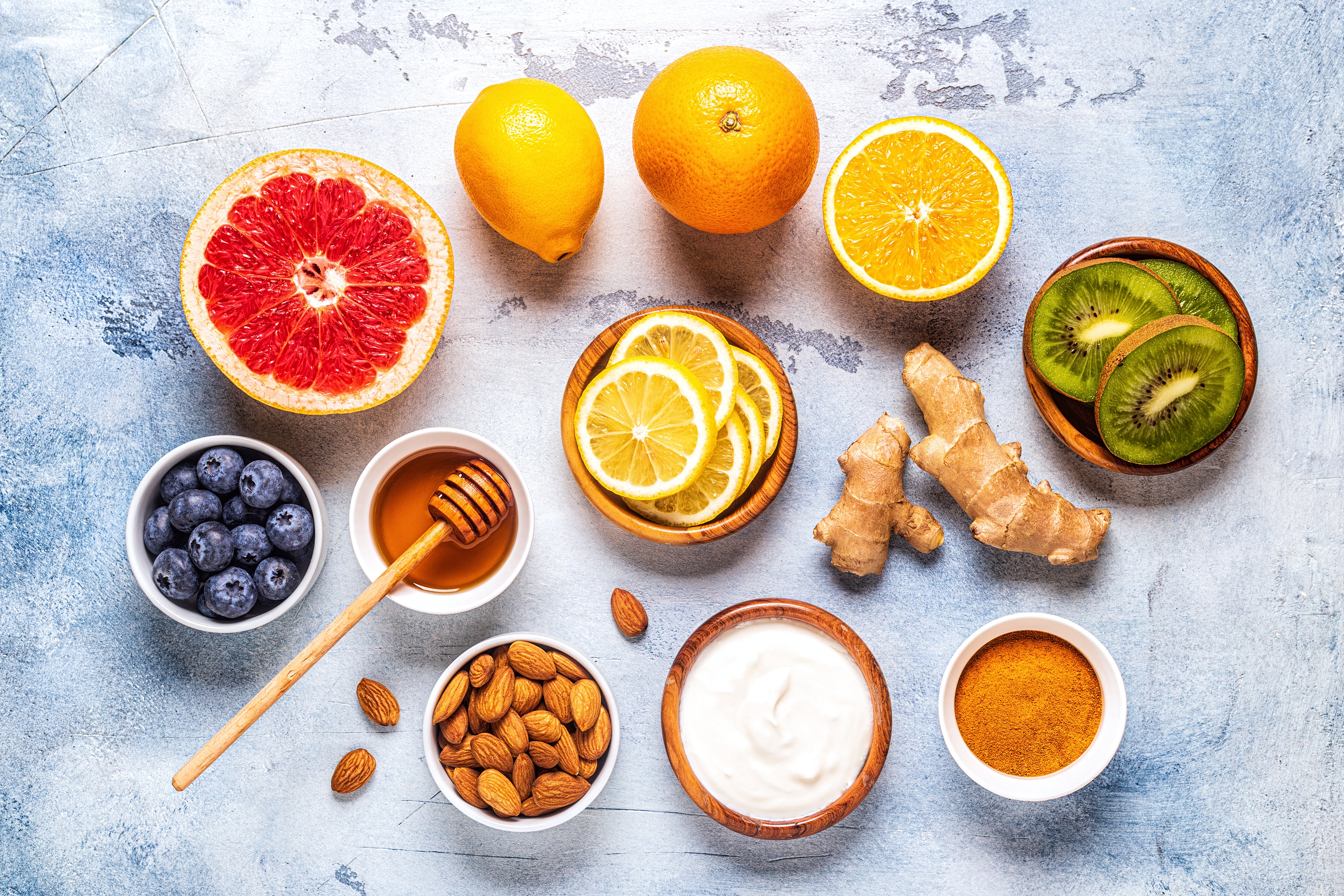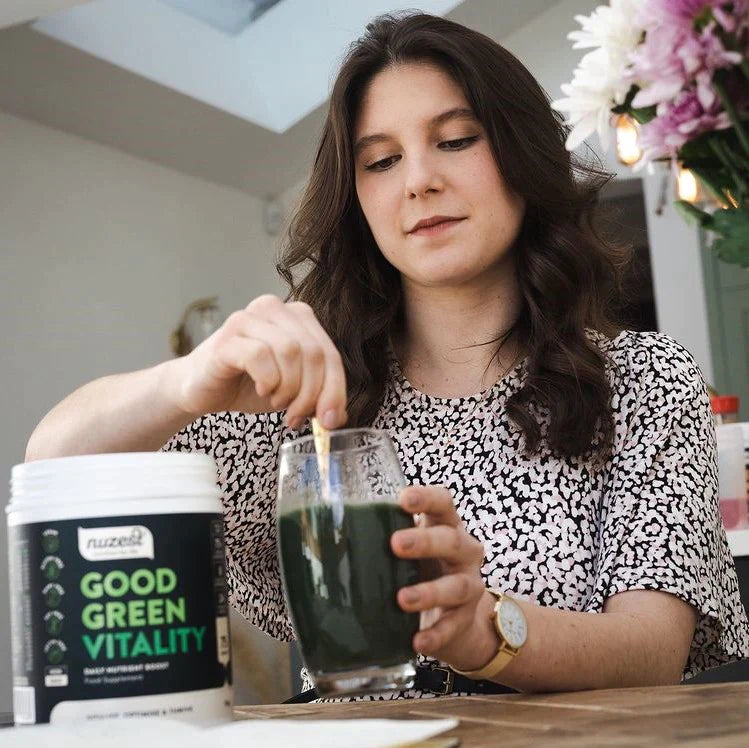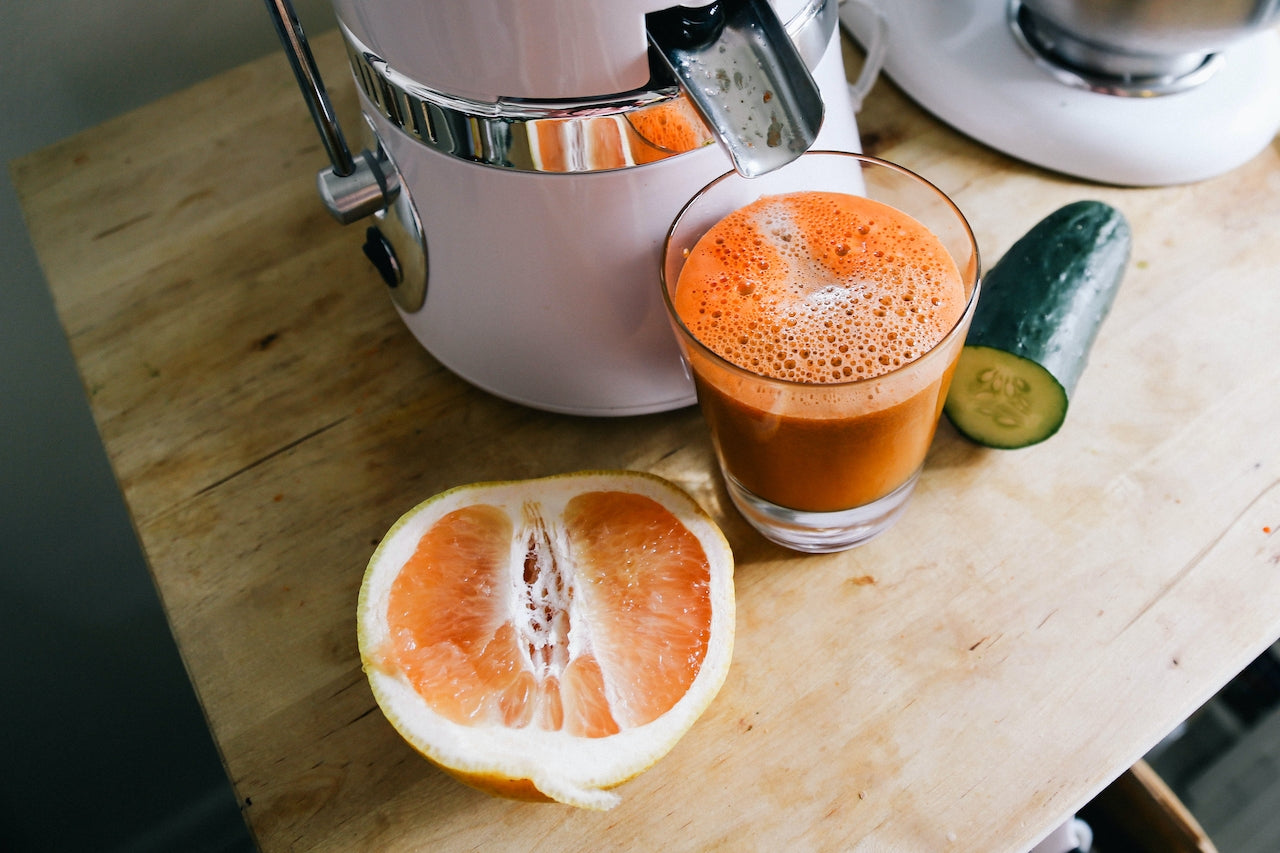© Nuzest 2025. All rights reserved.# Essential Nutrients for GLP-1 Users: Supporting Nutrition When Taking Ozempic, Wegovy or Mounjaro.
Understanding nutritional priorities when appetite is reduced
These statements have not been evaluated by the Food and Drug Administration. This information is not intended to diagnose, treat, cure, or prevent any disease. Always consult with your healthcare provider before making any changes to your diet, especially when taking medications.
Ozempic®, Wegovy®, and Mounjaro® are registered trademarks of their respective owners. Nuzest is not affiliated with the owners of these trademarks.
Introduction
GLP-1 receptor agonist medications have become an important tool for many individuals managing their weight or blood sugar levels. While these medications can be effective for their intended purposes, they often lead to reduced appetite, which may affect overall nutritional intake.
Research has shown that individuals taking GLP-1 medications may experience a 16-39% reduction in total caloric intake, which could potentially impact the consumption of essential nutrients.[1] This article explores key nutrients to prioritize when appetite is reduced and offers practical strategies for maintaining nutritional wellness.
Key Nutrients That May Need Special Attention
1. B Vitamins
Why they matter: B vitamins play crucial roles in energy metabolism, nervous system function, and cell health. They're water-soluble, meaning the body doesn't store them, so regular intake is important.
Research insight: Ward E. notes in a 2014 study that B vitamins are among the nutrients most likely to be inadequate in restricted diets.[4]
Food sources: Whole grains, meat, eggs, dairy, leafy greens, legumes, and nutritional yeast.
Nuzest solution: Good Green Vitality contains a comprehensive spectrum of B vitamins to support energy metabolism and overall health.
2. Essential Minerals: Magnesium, Zinc, and Iron
Why they matter: These minerals support hundreds of biochemical reactions in the body, from immune function to energy production.
Research insight: A cross-sectional analysis found that adults with poor appetite often show notably low intake of zinc and other essential minerals.[5]
Food sources:
- Magnesium: Dark leafy greens, nuts, seeds, whole grains
- Zinc: Oysters, meat, legumes, nuts, seeds
- Iron: Red meat, spinach, legumes, fortified cereals
Nuzest solution: Good Green Vitality provides these essential minerals in bioavailable forms to help meet daily needs.
3. Vitamin D
Why it matters: Vitamin D supports bone health, immune function, and various metabolic processes. Many individuals have suboptimal vitamin D levels due to limited sun exposure, certain dietary patterns, obesity, or medical conditions that affect vitamin D absorption.[6,8]
Research insight: Research has found connections between vitamin D status and various aspects of metabolic health.[6]
Food sources: Fatty fish, egg yolks, fortified foods, and sunlight exposure (the body produces vitamin D when skin is exposed to sunlight).
Nuzest solution: Good Green Vitality contains vitamin D as part of its comprehensive nutrient profile.
4. Fiber
Why it matters: Fiber supports digestive health, helps maintain healthy blood sugar levels, and contributes to feelings of fullness.
Research insight: A meta-analysis demonstrated the importance of adequate fiber intake for digestive health and overall wellbeing.[7]
Food sources: Fruits, vegetables, whole grains, legumes, nuts, and seeds.
Nuzest solution: Good Green Vitality contains fiber from plant-based sources, while Nuzest's Inner Biome Blend offers additional digestive support.
5. Protein
Why it matters: Protein is essential for maintaining muscle mass, supporting immune function, and various metabolic processes. Research suggests that during periods of weight change, adequate protein intake becomes even more important to support the maintenance of lean muscle tissue.[2]
Research insight: A study published in The Journal of Nutrition found that maintaining adequate protein intake during weight loss helps preserve lean muscle mass compared to lower protein diets.[3]
Food sources: Lean meats, poultry, fish, eggs, dairy, legumes, tofu, tempeh, and nuts.
Nuzest solution: Clean Lean Protein provides 19-21g of high-quality plant protein per serving (flavor dependent), offering a convenient way to boost protein intake when appetite is limited.
Practical Strategies for Maintaining Nutrient Intake
Focus on Nutrient Density
When appetite is reduced, every bite counts. Focus on nutrient-dense foods that provide maximum nutritional value. Consider:
- Incorporating colorful vegetables and fruits
- Choosing whole grains over refined options
- Including lean proteins with each small meal
- Adding healthy fats from sources like avocados, nuts, and olive oil
Consider Smaller, More Frequent Meals
Many people find that smaller, more frequent meals are easier to manage when appetite is reduced. Try:
- Planning 5-6 mini-meals throughout the day
- Including protein at each mini-meal
- Preparing nutrient-dense options in advance for convenience
Leverage Nutrient-Rich Smoothies
Smoothies can deliver concentrated nutrition in a form that's often easier to consume when appetite is limited. A basic nutrient-rich smoothie might include:
- 1 scoop Clean Lean Protein
- 1 scoop Good Green Vitality
- ½ cup berries or ¼ banana
- Handful of spinach (optional)
- 8 oz water or plant-based milk
Supplement Strategically
When it's challenging to meet nutritional needs through diet alone, thoughtfully selected supplements can help bridge the gap. Consider:
- A comprehensive multinutrient formula like Good Green Vitality, which includes essential vitamins and minerals
- Additional protein support from Clean Lean Protein
- Digestive support from Inner Biome Blend
Remember that supplements should complement, not replace, a varied diet. Always consult with your healthcare provider before starting any supplement regimen, especially when taking medications.
The Role of Hydration
Adequate hydration is essential for overall health and can sometimes be overlooked when appetite is reduced. Strategies for maintaining proper hydration include:
- Carrying a water bottle throughout the day
- Setting regular reminders to drink water
- Including hydrating foods like cucumber, watermelon, and broth-based soups
- Considering electrolyte-enhanced beverages if recommended by your healthcare provider
Mixing Good Green Vitality with water not only provides essential nutrients but also contributes to daily fluid intake.
Working with Your Healthcare Team
Maintaining optimal nutrition while taking GLP-1 medications is a team effort. Consider:
- Discussing your nutritional needs with your healthcare provider
- Working with a registered dietitian who has experience with GLP-1 medications
- Monitoring your energy levels and overall wellbeing
- Tracking your food intake temporarily to identify potential nutrient gaps
Your healthcare team can provide personalized guidance based on your specific health needs and goals.
Conclusion
While GLP-1 medications may present nutritional challenges due to reduced appetite, a strategic approach to nutrition can help ensure your body gets the essential nutrients it needs. By focusing on nutrient-dense foods, considering smaller, more frequent meals, leveraging nutrient-rich smoothies, and supplementing thoughtfully with products like Good Green Vitality and Clean Lean Protein, you can support your overall wellbeing during your GLP-1 journey.
Remember that nutritional needs are highly individual, and what works best for one person may not be ideal for another. Work closely with your healthcare team to develop a personalized nutrition plan that supports your unique health goals.
References
- Christensen S, Robinson K, Thomas S, Williams DR. Dietary intake by patients taking GLP-1 and dual GIP/GLP-1 receptor agonists: A narrative review and discussion of research needs. Obes Pillars. 2024 Sep;11:100121. doi: 10.1016/j.obpill.2024.100121
- Phillips SM, Chevalier S, Leidy HJ. Protein "requirements" beyond the RDA: implications for optimizing health. Appl Physiol Nutr Metab. 2016;41(5):565-572.
- Pasiakos SM, Cao JJ, Margolis LM, et al. Effects of high-protein diets on fat-free mass and muscle protein synthesis following weight loss: a randomized controlled trial. FASEB J. 2013;27(9):3837-3847.
- Ward E. Addressing nutritional gaps with multivitamin and mineral supplements. Nutr J. 2014;13:72. Published 2014 Jul 15. doi:10.1186/1475-2891-13-72
- Scheufele P, Rappl A, Visser M, Kiesswetter E, Volkert D. Dietary characteristics of community-dwelling older adults with poor appetite: a cross-sectional analysis. Age Ageing. 2024 May 11;53(Suppl 2)
. doi: 10.1093/ageing/afae040.
- Cândido FG, Bressan J. Vitamin D: Link between Osteoporosis, Obesity, and Diabetes? Int J Mol Sci. 2014;15(4):6569-6591.
- Yang J, Wang HP, Zhou L, Xu CF. Effect of dietary fiber on constipation: A meta analysis. World J Gastroenterol. 2012;18(48):7378-7383.
- Holick MF. Vitamin D deficiency. N Engl J Med. 2007;357(3):266-281. doi:10.1056/NEJMra070553
This blog post is for educational purposes only and is not intended as medical advice. Always read the label and use products only as directed. Individual results may vary.



